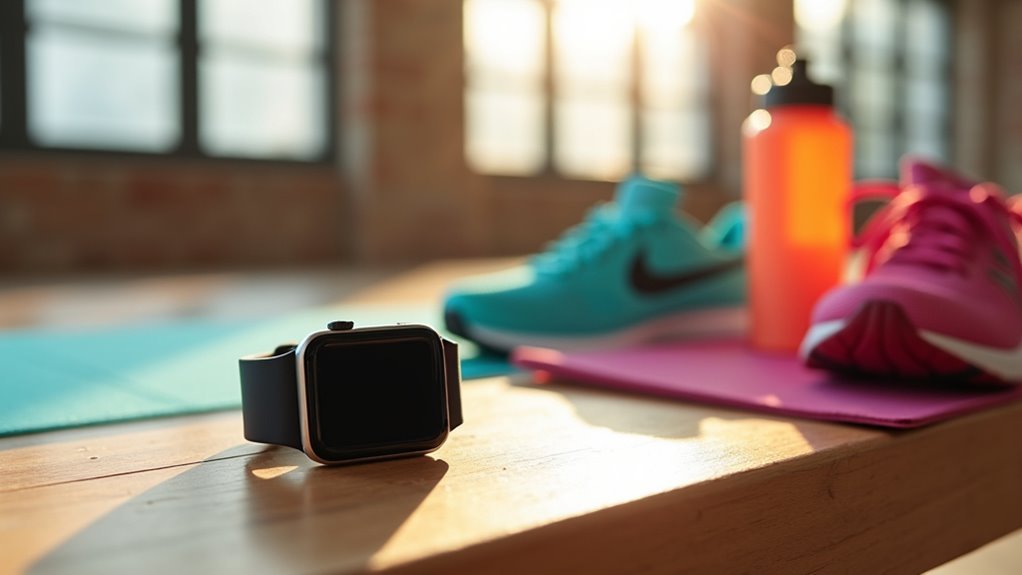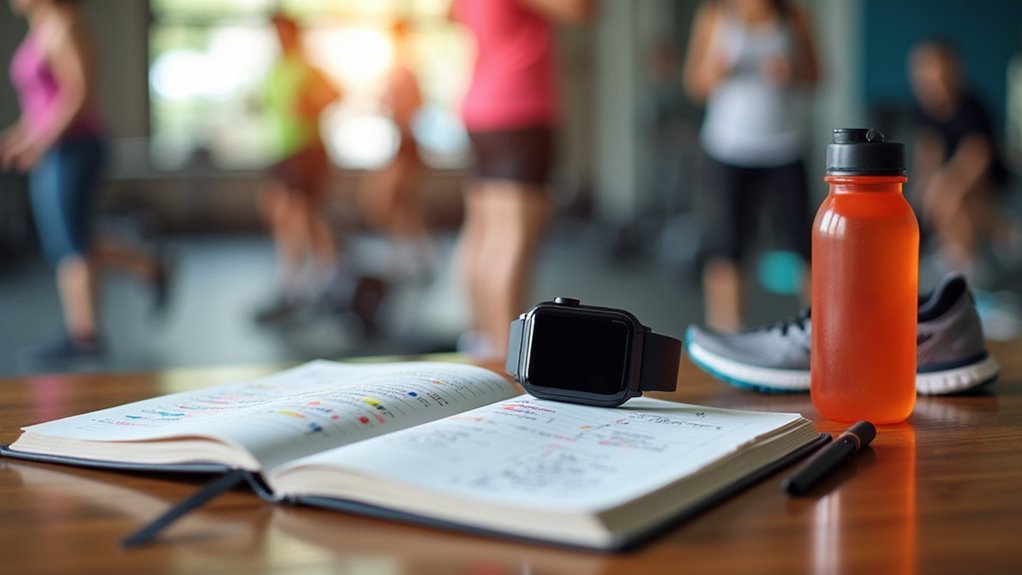You’ll log multiple daily workouts efficiently by setting up your smartwatch’s multi-sport modes for automatic shifts between activities like running, cycling, and swimming. Enable automatic activity detection to capture sessions without manual startup—devices like Oura achieve 89% accuracy across 40 activity types. Establish robust syncing protocols using tools like FitnessSyncer to unify data across platforms and maintain consistent workout records. These strategies will transform your fitness tracking approach and release advanced optimization techniques.
Streamline Multi-Sport Mode Transitions on Your Smartwatch

When you’re pushing through a grueling triathlon or duathlon, the last thing you want is fumbling with your smartwatch to manually switch between sport modes.
Auto-switching features eliminate this stress by automatically changing between sports when GPS detects movement changes, letting you focus entirely on performance.
Auto-switching technology tracks your transitions seamlessly, eliminating manual fumbling so you can maintain complete focus on crushing your race performance.
Garmin and Apple both offer these seamless switches, reducing button-press errors that plague manual changing during races.
You’ll get more accurate switch time tracking without the cumbersome manual input that often leads to missed data.
Before race day, familiarize yourself with your watch’s multisport profiles.
Most devices come with pre-defined triathlon and duathlon modes, but you can customize these—like swapping pool swimming for open-water segments.
Proper pre-race setup minimizes mid-race navigation, keeping your focus where it belongs. Each sport within your multisport activity gets recorded separately while being saved as one overall activity.
Optimize Automatic Activity Detection Settings
Since automatic activity detection eliminates the need to manually start and stop workout tracking, optimizing these settings becomes essential for accurate data collection.
Modern fitness devices like Oura achieve 89% accuracy recognizing 40 activity types, while Garmin enables auto detection by default for performance metrics.
You can customize which activities your device automatically detects, enabling or disabling specific exercises based on your routine.
Regular software updates improve detection accuracy, and combining biometric data like heart rate with motion sensors enhances results.
When your device misidentifies activities, manually correct them to train future detection.
For low-movement activities like yoga or Pilates, consider manual logging since these remain challenging for automatic detection.
Customize notification preferences to receive relevant alerts without distractions during workouts. Samsung Health users can access these settings by swiping up on their watch and selecting Workout detection from the Settings menu.
Sync and Organize Daily Workout Data Across Platforms

As fitness data accumulates across multiple devices and apps, establishing efficient synchronization becomes essential for maintaining detailed workout records.
You’ll need robust sync protocols that guarantee data consistency across your wearable devices, smartphone apps, and fitness platforms. Tools like FitnessSyncer and Health Sync allow you to unify data from various sources, creating a comprehensive view of your daily activities.
When integrating third-party apps, you must grant proper permissions to share data between platforms. This enables workouts to contribute to your activity rings and overall progress tracking. Before connecting any fitness application, verify app compatibility with your iPhone’s Health and Fitness apps to ensure seamless data sharing.
- Implement automatic syncing to streamline data movement between apps without manual intervention
- Use customizable dashboards with visualization tools to analyze patterns and track progress over time
- Enable offline sync capabilities to maintain data consistency even when connectivity is limited
Frequently Asked Questions
How Do I Quickly Log Strength Training Sets Between Exercises Without Interrupting Flow?
Use pre-formatted templates on your phone or voice commands to quickly log sets, reps, and weight during brief rest periods. Keep entries minimal with essential data only, maintaining your workout’s momentum and focus.
What’s the Fastest Way to Record Multiple Back-To-Back Workout Sessions Daily?
Use digital workout apps with multi-session tracking and superset features. Create pre-filled templates with common exercises, then batch log sessions quickly. Enable cross-platform syncing so you can record from any device seamlessly.
Should I Log Warm-Ups and Cool-Downs as Separate Activities or Combined?
You should log warm-ups and cool-downs as combined activities for efficiency when doing multiple daily workouts. Separate logging provides better analysis but becomes cumbersome with frequent sessions, making combined tracking more practical.
How Can I Efficiently Track Nutrition Timing Around Multiple Daily Workouts?
Use timestamped food logging apps to track meals relative to each workout. Record pre-workout timing, post-workout protein intake, and energy levels. Experiment with different schedules and monitor recovery patterns between sessions.
What’s the Best Method for Logging Rest Periods Between Multiple Training Sessions?
Use workout apps with automatic timers to set consistent rest intervals between sessions. Track daily recovery time, adjust periods based on fatigue levels, and review logged data regularly to optimize your multi-session training schedule.
In Summary
You’ll transform your multi-workout tracking from a tedious chore into a seamless process by implementing these three strategies. Don’t let technology work against you—make it work for you instead. Configure your smartwatch’s multi-sport shifts, fine-tune those automatic detection settings, and establish a solid sync routine across all your platforms. You’ll save precious time and maintain accurate records without the frustration of manual logging between activities.





Leave a Reply